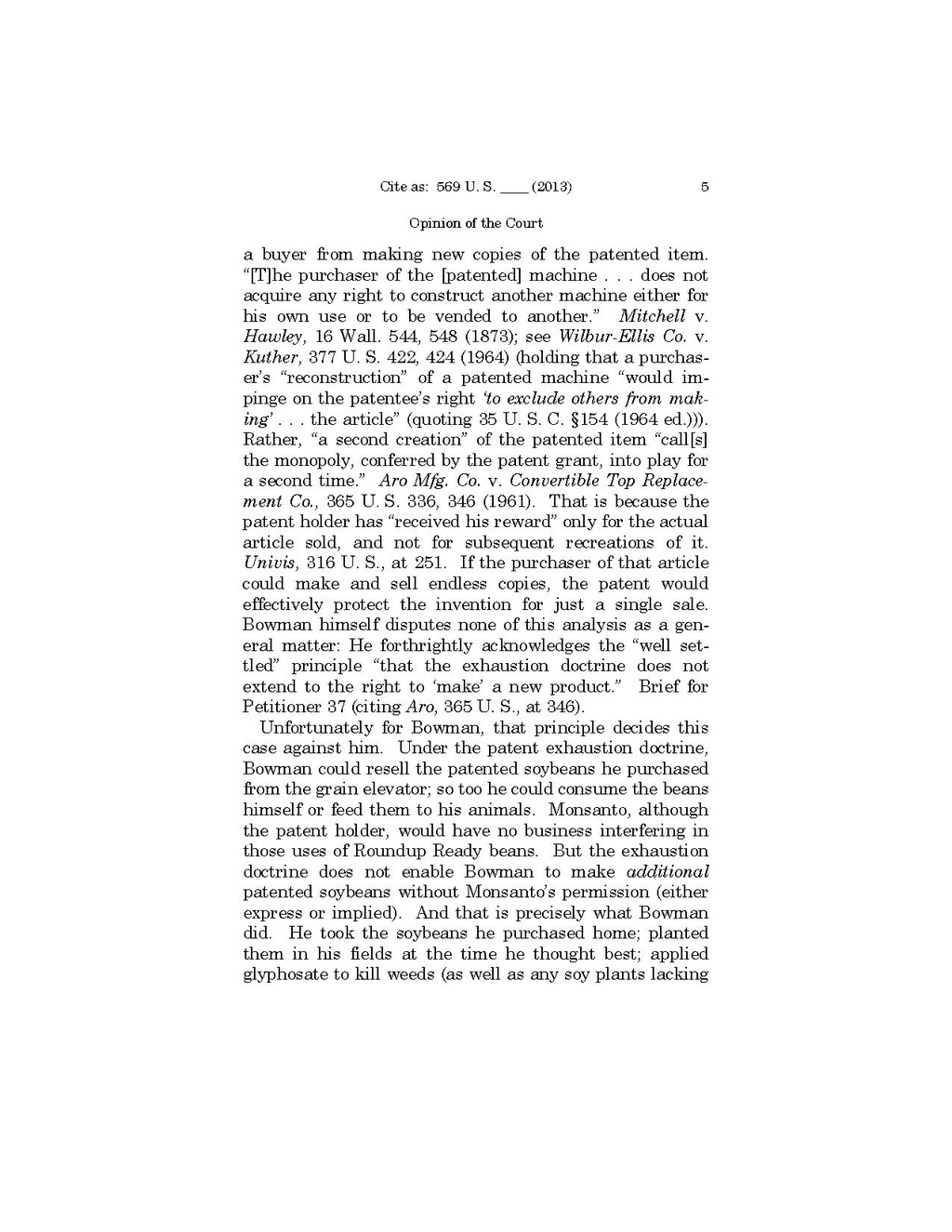Opinion of the Court
a buyer from making new copies of the patented item. "[T]he purchaser of the [patented] machine . . . does not acquire any right to construct another machine either for his own use or to be vended to another." Mitchell v. Hawley, 16 Wall. 544, 548 (1873); see Wilbur-Ellis Co. v. Kuther, 377 U. S. 422, 424 (1964) (holding that a purchaser’s "reconstruction" of a patented machine "would impinge on the patentee’s right ‘to exclude others from making ’ . . . the article" (quoting 35 U. S. C. §154 (1964 ed.))). Rather, "a second creation" of the patented item "call[s] the monopoly, conferred by the patent grant, into play for a second time." Aro Mfg. Co. v. Convertible Top Replacement Co., 365 U. S. 336, 346 (1961). That is because the patent holder has "received his reward" only for the actual article sold, and not for subsequent recreations of it. Univis, 316 U. S., at 251. If the purchaser of that article could make and sell endless copies, the patent would effectively protect the invention for just a single sale. Bowman himself disputes none of this analysis as a general matter: He forthrightly acknowledges the "well settled" principle "that the exhaustion doctrine does not extend to the right to ‘make’ a new product." Brief for Petitioner 37 (citing Aro, 365 U. S., at 346).
Unfortunately for Bowman, that principle decides this case against him. Under the patent exhaustion doctrine, Bowman could resell the patented soybeans he purchased from the grain elevator; so too he could consume the beans himself or feed them to his animals. Monsanto, although the patent holder, would have no business interfering in those uses of Roundup Ready beans. But the exhaustion doctrine does not enable Bowman to make additional patented soybeans without Monsanto’s permission (either express or implied). And that is precisely what Bowman did. He took the soybeans he purchased home; planted them in his fields at the time he thought best; applied glyphosate to kill weeds (as well as any soy plants lacking
